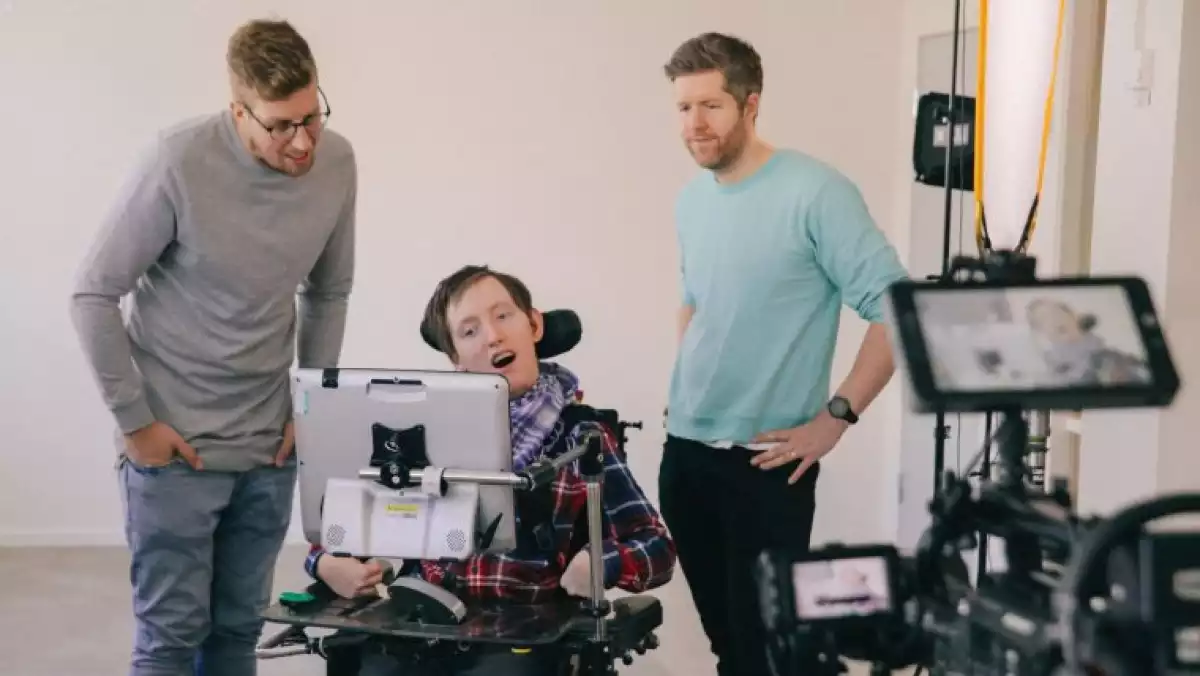
There are so many different types of therapy in the world of psychology and medicine, and these treatments help to ease, prevent, or cure a wide range of psychological pathologies.
So, throughout this article, we'll tell you about the 24 most significant types of therapy, particularly in the psychotherapy field, which are currently practiced, like cognitive-behavioral, occupational, animal-assisted, and couples therapy.
What is therapy?
The words therapy and treatment have their origins in medicine, and they refer to a set of procedures with the goal of treating or relieving certain illnesses or associated symptoms.
Besides, therapy is the branch of Eastern medicine that has the aim of getting to know all of the procedures applied and how these work as a part of the treatment for all kinds of conditions.
There are many different ways to apply treatments. There are individual, group, alternative, or even aetiological therapies, which means taking direct action on the cause of the disease.
All of these can be carried out using the many different types of therapies that currently exist.
Physical therapy, neural, and gene therapy are all examples of treatments applied to medicine.
On the other hand, occupational therapy and psychotherapy are also treatments used to handle other types of problems using different methods. In this article, we're going to focus on these last two.
For more information on psychotherapy and when and how to seek it out, check out the American Psychological Association's website -they offer some guidelines related to all of this.
Related: How To Relax Your Mind: 5 Effective Relaxation Techniques
24 Types of therapy
There are many types of therapy, and they all have different approaches, theories, and perspectives. Even so, they all share one common goal: helping the client to reach a state of well-being, and each variety has different procedures and methods to achieve this.
Once you get past the false stereotype of the serious psychologist in his office with his chaise-lounge, be sure to check out our list of the main types of therapy that you can find in psychology.
1. Cognitive-behavioral therapy
Cognitive-behavioral therapy one of the most researched treatments and one of the types of psychotherapy with the best results as far as the intervention.
This treatment is based on how we think and how this affects our behavior.
It tries to identify dysfunctional thoughts that the person has and change them through a functional analysis of these.
The psychologist uses different techniques to help their client with social skills or cognitive restructuring, playing an active role in this whole process.
Depression, anxiety disorders, and post-traumatic stress syndrome (PTSD) are the conditions that are most commonly treated using this technique.
2. Occupational therapy
The World Health Organization (WHO) says that occupational therapy is a set of techniques and methods geared towards carrying out daily activities with therapeutic aims. Their intention is tohelp the client to gain more independence through rehabilitation.
For example, therapists that help differently-abled people by working on carrying out everyday activities, functional adaptation to their environment and even cognitive re-education, among other things.

3. Couples therapy
Clinical psychotherapy has many different psychological approaches but, in this case, the goal is to treat and improve problems that couples experience in their everyday lives.
The psychologist needs to be a trained professional with specialized education in this area to intervene in these situations.
Related: Couples Therapy: When To Go And What To Expect
4. Gestalt therapy
Gestalt therapy forms an essential part of the humanistic psychotherapy field. This type of treatment works on self-knowledge and freedom to get the client to solve the issues that they have on their own, accompanied by the therapist.
Fritz Perls established this branch of psychotherapy in the 1940s. Family constellations are one popular therapeutic Gestalt method.
5. EMDR therapy
Francine Shapiro founded Eye Movement Desensitization and Reprocessing (EMDR therapy) in 1987.
This is a psychotherapeutic approach that acts on the patient's sensory processing system by inducing a state of relaxation.
People with low self-esteem, emotional problems, panic attacks, or that have been through traumatic events can benefit from this type of treatment.
Bilateral stimulation works to ease the connection of the two brain hemispheres to process the disturbing information more adaptively, reducing its emotional charge.
This video explains EMDR in more detail:
6. Cognitive therapy
Cognitive therapy is a psychotherapy intervention method focused on treating cognitive distortions, (thought patterns that have an adverse effect on behavior).
This treatment works to restructure those patterns to improve the patient's quality of life and attempts to identify the irrational thoughts that cause suffering to determine what makes these illogical.
7. Family therapy
Family therapy is perfect for groups of people united through family ties. The goal here is to improve the relationship itself, communication style, and the complex interactions that detract from the cohesion of this group.
Generally speaking, this methodology focuses on the 'index patient' -the person that has some type of clinical disorder or problematic behavior.
8. Behavioral therapy
This is a type of psychotherapy based on behaviorism. This psychological philosophy focuses on the idea that we learn through reinforcement and punishment, negative or positive, and that this all has an impact on our behavior.
The goal here is to identify the learned behaviors and observe their impact on everyday life. This method also attempts to get the patient to unlearn certain behaviors in exchange for other healthier ones. Phobias and addictions are pathologies that respond well to this type of treatment.
9. Acceptance and commitment therapy (ACT)
Acceptance and commitment therapy is a branch of cognitive-behavioral therapy. This is one of the types of therapy is highly effective in treating cases of depression.
This method works to see the effect that thoughts have on behaviors by using a series of cognitive techniques, relying on emotions as the driving force in this process. The primary goal is to get the patient to commit fully to him or herself and this therapeutic change.
Related: Paranoia (Delusional Disorder): A Definition, Symptoms And Treatment
10. Animal-assisted therapy
Animals have an incredible therapeutic capacity, and in many cases, this is much stronger than any traditional treatment. Dolphins, horses, and dogs are just a few examples of the animals involved in this type of treatment.
Not only can animals help in the treatment of pathologies like social phobias or depression, but they also strengthen relationships and help with physical therapy, as is the case of hippotherapy with horses.
To learn more, check out this video which describes the benefits of animal-assisted therapy:
11. Group therapy
This is a type of psychotherapy that has many different approaches like cognitive-behavioral and can be carried out in a group format. Coping strategies and cognitive and emotional resources are all topics that the therapist can work on with the patients.
Sometimes this type of treatment is used just as a compliment to individual therapy, although some also recommend this kind on its own.
Addictions and eating disorders are two types of psychological pathologies that see improvement with group treatment.
12. Regression therapy
This treatment is also known as hypnotic regression which is a branch of clinical hypnosis. Using techniques like guided imagery, the patient is brought to a state of relaxation, and then, in a controlled way, the patient begins to relive events from the past.
Certain psychological disorders like post-traumatic stress syndrome can benefit from this technique as a compliment to other treatments. Brian Weiss was one of the psychiatrists that blazed trails in this therapy.
Related: Hypnosis: Reality Or Myth? Main Uses And Techniques
13. Brief strategic therapy
This is one of the types of therapy carried out in a very limited time frame. In this case, the treatment focuses wholly on changing one specific dysfunctional kind of thought, or a particular problem.
This method promotes the patient's strengths, easing the reflection process for the individual, helping them to get to know themselves better so that they can play an active role in the therapy.
14. Art therapy
Art therapy promotes the expression of thoughts, problems, and emotions, as well as self-discovery through painting and sculpture.
This is a potentially beneficial, natural form of expression, that takes on therapy from an entirely different direction. Music and drama therapy are other associated therapies in this area.
If you go to the American Art Therapy Association's website, you'll find activities, publications, and an art therapist locator so that you can find qualified professionals so that you can try this method and know that you're in the hands of the most qualified professionals in the country.

15. Dialectical behavior therapy (DBT)
Dialectical behavior therapy (DBT) is a third generation cognitive-behavioral psychotherapy where the psychologist focuses on teaching the client psychosocial skills. The founder of this treatment is Marsha M. Linehan, and she established this treatment for individuals with Borderline personality disorder (BPD). It uses techniques geared toward emotional regulation and acceptance.
Related: Personality Disorders: Types And Clusters
16. Holistic therapy
This isn't a type of psychotherapy, but rather a series of alternative treatments that attempt to treat aspects of the psyche and emotions, the body and the transpersonal using all methods of different natures.
Holistic therapy is closely connected to personal development and thinks of each person as a whole, taking both their mind and body into account.
Psychological disorders shouldn't be treated using this method, although it is an excellent way to foster self-discovery and personal growth.
17. Transpersonal therapy
Abraham Maslow, the creator of the hierarchy of needs, is the founder of this branch of humanistic therapy. This psychological treatment emphasizes the importance of discovering our sense of purpose in life and self-knowledge.
Transpersonal therapy believes in problem-solving based on needs depending on their position in the hierarchy. When combined with other techniques like meditation, guided imagery, or creative writing, it can be highly effective.
18. Sex therapy
Sex therapy is a branch of psychotherapy that can be based on any number of psychological theories. In general, cognitive-behavioral is the primary type involved, and its goal is to help analyze and treat sexual problems whether this is on an individual level or for both parties in a relationship.
Sexual orientation or gender identity are other topics that often come up in these counseling sessions.
19. Rational emotive behavior therapy (REBT)
Rational emotive behavior therapy (REBT), founded by Albert Ellis, focuses on solving emotional and behavioral problems using a direct and empirical model, represented by the famous A-B-C sequence, geared towards cognitive restructuring.
REBT is a branch of cognitive-behavioral therapy and suggests that to change certain behaviors, learning to rationalize and being conscious of your emotions and how your thoughts affect these, is vital.
Once they identify these, the psychologist gives the client techniques to create constructive thoughts. Social phobia, sexual dysfunction, and anger are examples of psychological problems that react well to this type of treatment.
20. Humanistic therapy
Humanistic therapy, founded by Carl Rogers is based on the premise that psychotherapy clients need to be active agents in their own change, focusing on the present to create alternative options for problematic states. This theory's followers see human growth as the main goal.
21. Narrative therapy
This is a type of psychotherapy developed by Michael White and David Epston in the 1970s. Narrative therapy and therapists use narrative as a therapeutic method.
It argues that our identity is determined, in part, by how we explain things.

22. Psychoanalytic therapy
Psychodynamic and psychoanalytic therapies are two of the most popular types of therapy in the world since the famous psychoanalyst, Sigmund Freud created them. According to these theories, in large part, psychological problems come from instinctive impulses repressed in one's unconscious mind and mainly stem from childhood.
Patients of this therapy usually undergo long-term treatment following this method. Interpersonal therapy and Jungian therapy are two other methods that fall under the same psychological intervention umbrella.
23. Electroconvulsive therapy (ECT)
Electroconvulsive therapy (TEC) is a psychiatric treatment also known as electroshock therapy, that's used to treat severe cases of major depressive disorder that haven't responded to other treatments as well as in cases of schizophrenia and acute mania, among other things.
Amnesia, confusion and foggy memory are a few side-effects related to this treatment. Today there are still hospitals that perform electroshock therapy treatments but only following stringent rules and guidelines.
Related: Lobotomy: Definition And Hazards
24. Interpersonal therapy
This is a type of therapeutic intervention that aims to improve the quality of patient's interactions and their communication style. It states that the cause of many psychological symptoms are the harmful interactions that people experience throughout their lives.
Studies find this therapy helpful in cases of mood disorders as well as for other occasional problems or feelings of frustration.
Check out the original article: Los 24 tipos de terapia psicológica más importantes at viviendolasalud.com
References
Angus, L., Watson, J.C., Elliott, R., Schneider, K., & Timulak, L. (2015). Research in humanistic psychotherapy 1990-2015: from methodological innovation to treatment results backed by evidence and beyond. Psychotherapy Research, 25(3):330-347. doi:https://doi.org/10.1080/10503307.2014.989290
Bernardo, M., & Urretavizcaya, M. (2015). Dignificando una terapia electroconvulsiva basada en la evidencia. Revista de Psiquiatría y Salud Mental, 8(2):51-54. doi:http://dx.doi.org/10.1016/j.rpsm.2015.01.002
Caballero, R.P. (1941). Evaluation of the results of psychoanalytic therapy. American Journal of Psychiatry, 98(3):434-446. doi:https://doi.org/10.1176/ajp.98.3.434
David, D., Cotet, C., Matu, S., Mogoase, C., & Stefan, S. (2017). 50 years of rational-emotive and cognitive-behavioral therapy: a systematic review and a meta-analysis. Journal of Clinical Psychology, 74(3):304-318. doi:https://doi.org/10.1002/jclp.22514
Hofmann, S.G., Asnaani, A., Vonk, I.J.J., Sawyer, A.T., & Colmillo, A. (2012). The effectiveness of cognitive behavioral therapy: a review of meta-analyzes. Cognitive Therapy and Research, 36(5): 427-440. doi:https://doi.org/10.1007/s10608-012-9476-1
Mundt, C. (2003). Comprehensive guide of interpersonal psychotherapy. American Journal of Psychiatry , 160(2): 398-400. doi:https://doi.org/10.1176/appi.ajp.160.2.398-a
